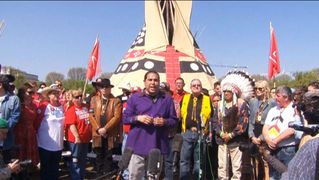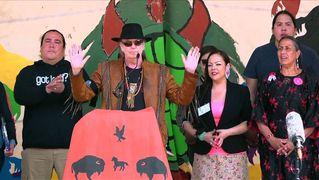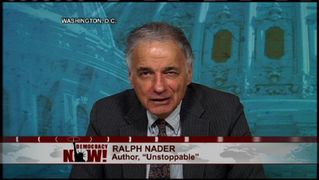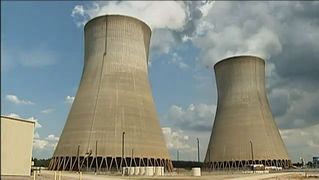Dhr. Seven, Ashley Wells, CC Liu, Wisdom Quarterly; The Woody TalkShow
 |
| The Monastic Disciplinary Code says pandakas (transsexual or transgender, often gay, individuals) may NOT fully ordain but might be novices as a school interprets its Vinaya. |
Openly gay Thai novice says it should be okay for gays to be monks
 |
| Gays are found worldwide but are rarely "out" |
According to Theravada Buddhist texts -- from the explanatory stories found in the "Monastic Disciplinary Code" (
Vinaya), as translated by
Leonard Zwilling (published in
Buddhism, Sexuality, and Gender, edited by Jose Ignacio Cabezon) -- homosexuality would NOT in keeping with the monastic code.
Theravada is the Buddhist tradition followed by 95% of Thailand.
 |
Just friends, Burma* (JLH)
|
Certainly homosexuals are loved and accepted in the
lay Buddhist community. And many gays feel very welcome in traditional Asian Buddhist cultures, not the least of which is Thailand's very welcoming one with its third-gender
kathoeys ("lady-boys").
But that acceptance does not extend to official
full monastic ordination. Many gays certainly seem to be "monks" (
bhikkhus), but they are actually
novices (
samaneras or "trainees," "probationers," "new recruits").
- PHOTO: *Just friends? A curious thing
about Asia, which many closeted gays must find comforting, is that males
hold hands and touch one another the way females do in Western society,
and no one thinks of it as "gay" or odd or at all sexual. The two novices or monks shown here at Burma's Shwedagon Pagoda may hold on to one another, and no one in that society would
think this was indicative of homosexuality or even an effeminate thing. But as Western tourists we can hardly think it indicates anything else. Females
in Asia are not as demonstrably touchy-feely as in the West, but there is some innocent sisterly affection.
Novices are generally young males under 20 who take
temporary ordination in fulfillment of their Southeast Asian (Thai, Burmese, Cambodian, Laotian) Theravada religio-cultural obligations.
Genrally, ALL Thai males (gay or not) are expected to ordain temporarily in the capacity of a
samanera (female
samaneri) for at least a week. [Everything said of gay males here would equally apply to females seeking FULL ordination (whether heteroflexible, bisexual, ambisexual, pansexual, lesbian, or experimental), which is distinct from the Ten Precept status (Thai
Mae Chee) most females were traditionally restricted to in Theravada countries. Female can now be fully ordained thanks to newer generations of nuns who successfully reinstituted the tradition.]
 |
| Gender is socially constructed yet very real |
Some might do it for a shorter duration, others for a summer vacation (or a traditional three-month "
Rains Retreat" period). Of these, it is expected that only a tiny fraction would choose the lifelong celibate, ascetic, formal monastic lifestyle. But few people would be able to tell a novice from a monk (
bhikkhu). Usually, age is the giveaway. Most novices are from 7-20 years of age (taking into consideration that in Asia one is born a 1-year-old, the novitiate state is mostly for teens); however, one may temporarily take robes at any age as a novice with the cooperation of a temple and its abbot.
- Buddhism and Sexual Orientation
- What the Buddha Never Taught: A "Behind the Robes" Account of Life in a Thai Forest Monastery (20th Anniversary Edition) is a funny and enlightening behind-the-scenes account of life in a Thai forest monastery by Tim Ward.
- What the Buddha Never Taught is a wonderful true-life story by a journalist who wanted to see what it was like to live at Wat Pah Nanachat, the International Forest Monastery open to Westerners in Northeast Thailand. We visited it, asked around, and found it to be just as Ward described even years later. He did not find a nest of homosexuality, but some novices are gay and forced to temporarily ordain as if they were Catholic boys in Rome. Ward tries to explain Thai culture, which as Westerners we are forced to think is so sexual and "anything goes." But apart from the Bangkok Red Light District strip clubs (like Pat Pong) and misleading massage parlors (which actually do massage and are not fronts for prostitution since prostitution can be found everywhere else).
No doubt homosexuality exists in the Thai
Sanghas, both in the larger more lax
Mahanikaya and the more extreme royal
Dhammayut schools. The latter has grown famous for its restoration of the ancient Forest Tradition, but some criticize it as illegitimate because it was founded by a Thai king who wanted to ordain, and kings have no business and no authority to found Buddhist schools. They, however, do have the money and authority to fund them. So while
Dhammayut is only one-tenth the size of the
Mahanikaya, it enjoys prestige, reverence, fame, and financial influence far beyond its size. Most renowned
Western monks who studied in Thailand did so in the Forest Tradition, which is often associated with the famous Thai teacher
Ajahn Chah.
The most famous is the comedic British monk in Australia,
Ajahn Brahm. Others include
Jack Kornfield (author of
Living Buddhist Masters, who brought attention to Ajahn Chah and other Buddhist saints in the jungles of South and Southeast Asia to the West, reissued as
Living Dharma: Teachings of Twelve Buddhist Masters), Sharon Salzberg, Joseph Goldstein, Ajahn Sumedho and other
former abbots of WPN, and so on.
In spite of what casual visitors may conclude, Thailand may be liberal and tolerant, but as a Buddhist society with 90-95% adherence to Theravada Buddhism, it is very conservative.

Buddhism, Sexuality, and Gender explores historical, textual, and social questions relating to
the position and experience of women and gay people in the Buddhist
world from India and Tibet to Sri Lanka, China, and Japan. It focuses on
four key areas: Buddhist history, contemporary culture, Buddhist
symbols, and homosexuality (including traditional Japanese pederasty or shudo akin to Roman and Greek practices presumably followed to this day by the closeted Catholic priesthood in the old Mithra temple complex now called the Vatican), and it covers Buddhism’s entire history,
from its origins to the present day. The result of original and
innovative research, the contributors offer new perspectives on the history
of the attitudes toward, and of the self-perception of, women in both
ancient and modern Buddhist societies. They explore key social issues
such as abortion, examine the use of rhetoric and symbols in
Buddhist texts and cultures, and discuss the neglected subject of
Buddhism and homosexuality.
 |
| What leaders do -- be it Obama, Netanyahu, or the Pope -- followers will follow, regardless of the motives of the leaders doing it. Hugs are homeplate, and exemplars are on first base. |
The question becomes a Roman Catholic one: Are non-practicing homosexuals acceptable for full ordination? That is a question that for all practical purposes has to be left to the abbots who would train and be responsible for them. This is where money enters the picture because Western homosexuals can, due to their affluence, find acceptance in poorer temples with few questions asked. Formally, one would be asked during the ordination process. But what will the abbot or the quorum of monks hear if they do not want to know?
"Are you a pandaka [pervert, transsexual, flamboyant homosexual, gender-bending transvestite, eunuch, lascivious person incapable of containing your tendency toward sex, self-soothing, masturbation, or sexual misconduct]?" Honestly speaking, one would probably have to say "probably not in the long run." But practically speaking, who would admit to not having self-control. Surely at the time of ordination, one would feel an imperative to rein it in, conceal from oneself, or conceal it from the gatekeepers to live in the close company of unmarried men.
 |
What's the big deal? - It is a big deal! (TM)
|
Karmically, this would be a horrible thing to do, but few people believe in the godlike abilities of karma (intentions with the power to bring forth mental and physical results in the future) or even give much consideration to their actions. How long have gay and bisexual men escaped the hetero-normative world into what they perceive to be the welcoming arms of a cloistered all-male community? Men are comfortable and comforting, and would anyone even know? They would know, and laypeople are unlikely to ask for if they know or figure it out, they would still be kowtowed by religious fears of so much as entertaining the question. Why do young novices and boys in the community end up being molested by some fraction of those who enter and remain in the Sangha as frauds?*
- [*NOTE: This is not to suggest that homosexuality leads one to molest boys, but only to say an almost equally controversial thing: All males who molest boys are engaging in homosexuality, even if one maintains that they are straight or doing it for nonsexual reasons. A terrible thing that happens with molestation, incest, and sexual abuse is that no one talks about it, creating a perfect environment for it to fester and perpetuate itself. Let gays be gays and bis be bis, but let's never let children be molested or victimized because we have too many hang ups to deal with the stark reality of our own issues.]
 |
| Good thing this is only for a week (D_C) |
Isn't it because gatekeepers are lax or condoning? They can hardly keep pleading ignorance to the practices and inclinations of someone under their 24 care and oversight. Much the same might be said for parents, but a monastic upbringing is much more structured and controlled than any but the most repressive households, and it is this way by design. Homosexuality in and of itself would not, in our opinion, be "
sexual misconduct" (
kamesu micchacara), but many Southeast Asian as well as Western societies surely see it that way.


 MOSCOW, Russia - About 100,000 people have marched through Red Square to celebrate May Day, the first time the annual parade has been held on the vast cobblestoned square outside the Kremlin since the fall of the Soviet Union (USSR) in 1991.
MOSCOW, Russia - About 100,000 people have marched through Red Square to celebrate May Day, the first time the annual parade has been held on the vast cobblestoned square outside the Kremlin since the fall of the Soviet Union (USSR) in 1991.





























































































































































































































































































